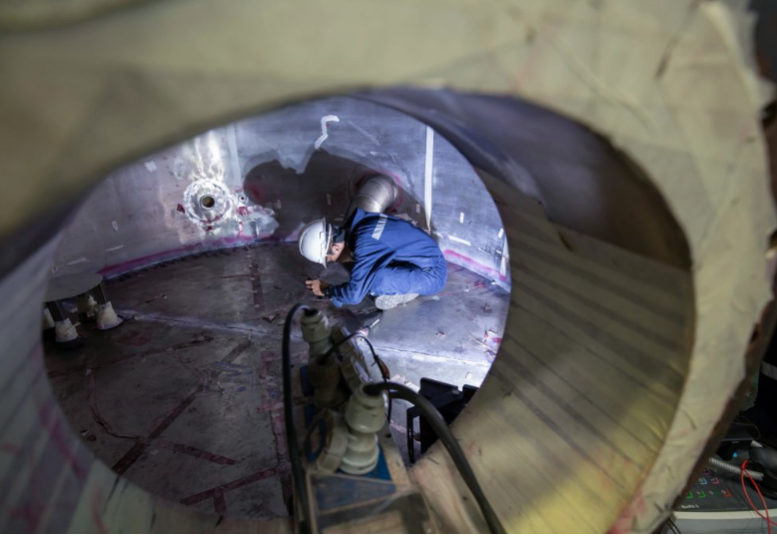Modern ships are capable of carrying larger and larger loads while the number of crew aboard remains approximately the same. This means that Seafarers are more exposed to the dangers of confined space entries than ever before.
What is a Confined Space?
The International Maritime Organization (IMO) defines enclosed spaces as having limited openings for entry and exit, inadequate ventilation or a design not intended for continuous worker occupancy.
This includes: cargo spaces; double bottoms; fuel tanks, ballast tanks; cargo pump-rooms, compressor rooms; chain lockers; and any other area that may be oxygen deficient.
These spaces are often used for installing new machinery or for storage and, on a modern vessel that has a complex matrix of pipelines running through each of its parts, there will be even more of them.
Toxic gases generated by storage or leakage will accumulate in confined spaces because of the lack of ventilation.
Thus, if a crew member enters to carry out repairs or cleaning without taking adequate precautions, results are usually fatal.
Recent Incidents
In the last few years there have been numerous deaths caused by confined spaces in the UK, Denmark, Belgium, and Malaysia. In the last 4 months alone, there have been 6 deaths.
Two incidents on RMI flagged ships occurred within 24 hours of each other and resulted in the deaths of three crew members, and two others losing consciousness.
As recently as November 2018, three more seafarers died of asphyxiation on board the timber carrier Apollo Kita as they were working in the vessel’s hold.
These are just the latest in a long line of similar incidents.
Regulations
Deaths in confined keep happening despite the IMO’s attempts to prevent them with new regulations. The latest – Regulation XI-1/7 – requires all SOLAS applicable vessels to carry portable gas detectors for monitoring enclosed spaces:
“Every ship to which Chapter 1 applies shall carry an appropriate portable atmosphere testing instrument or instruments. As a minimum, these shall be capable to measuring concentrations of oxygen, flammable gases or vapors, hydrogen sulphide and carbon monoxide. Instruments carried under other requirements may satisfy this regulation. Suitable means shall be provided for the calibration of all such instruments.”
Effective gas detectors and calibration instruments are essential on all cargo vessels. This equipment should also be as versatile and easy to use as possible so that all crew members are protected.
Equipment
Martek has a range of fixed and portable gas detection equipment designed to be as simple and safe to use as possible.
The MGC Simple+ doesn’t require calibration or charging, due to cutting edge sensor technology, so crew members can carry it at all times to make sure that that the environment they’re working in is safe.

The MGC Simple+ is lightweight and convenient to carry. It’s simple and easy to use, with one-button operation and large screen that’s readable in low light or changeable conditions.
The MGC Simple+ is rated IP68 so it’s waterproof up to 1.5m for 30 minutes, durable and uses infrared technology that’s immune to sensor poisoning, which means no calibration is necessary. Because it doesn’t need oxygen to operate, it will reliably test for hydrogen sulphide (H2S), carbon monoxide (CO), oxygen (O2), and combustible gases (LEL) in even the most challenging of confined spaces.
